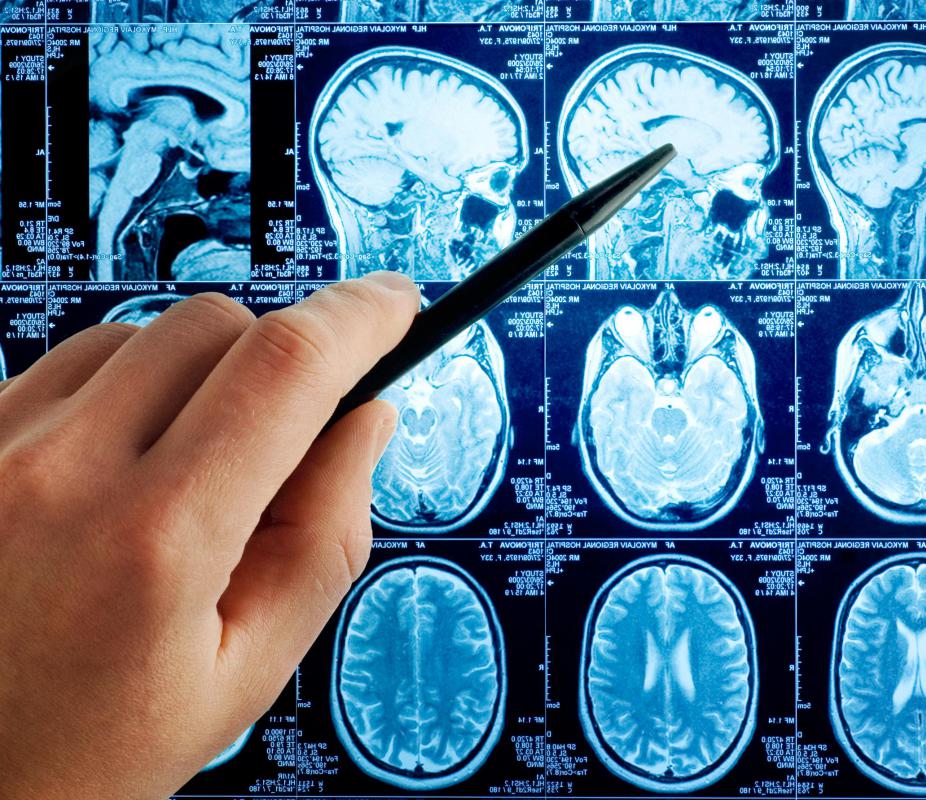At TheHealthBoard, we're committed to delivering accurate, trustworthy information. Our expert-authored content is rigorously fact-checked and sourced from credible authorities. Discover how we uphold the highest standards in providing you with reliable knowledge.
What Is a Cerebellar Infarction?
A cerebellar infarction is a type of stroke. Strokes result from the loss of neurological function because of an obstruction of blood flow within the brain. A stroke typically is caused by a blood clot lodged within an artery, cutting off oxygen supply. In a cerebellar infarction, the obstruction is located in the cerebellar arteries, affecting the cerebellar hemispheres of the brain. It is uncommon for a stroke to occur in the cerebellum, but it can happen.
Strokes that occur within the cerebellum can be ischemic or hemorrhagic. Ischemic strokes are more common and are caused by obstructed arteries. Hemorrhagic strokes are caused by arterial hemorrhages. A hemorrhagic cerebellar infarction is a rare occurrence.

The cerebrum, cerebellum and brain stem are the chief parts of the brain. Responsible for higher level functioning, the cerebrum is necessary for speech, reasoning and cognitive functions. The brain stem maintains involuntary bodily functions, such as heart rate and respiration. The cerebellum is the area of the brain that is necessary for balance, movement and coordination.

Cerebellar infarction is marked by headache, dizziness, nausea and vomiting. The most apparent symptoms are problems with walking, maintaining balance and coordination. A person who has been affected by cerebellar infarction might not be able to walk at all or might even go into a coma. The person's hands might tremble as well.
Doctors diagnose strokes by physical examination and testing. Common tests include computed tomography (CT) scans and magnetic resonance imaging (MRI). With a CT scan, physicians have the ability to tell whether the stroke is caused by a clot or hemorrhage. A doctors can use an MRI tell whether a stroke has occurred within minutes of happening. Blood tests also are done.

The treatment for cerebellar infarction includes a combination of drugs, surgery and rehabilitation. Stroke patients are administered thrombolytic drugs to dissolve blood clots within their blood vessels. Drugs are given to decrease pressure in the brain and to prevent blood clotting. Rehabilitation involves physical, speech and occupational therapies.

Stroke is a leading cause of death worldwide. High blood pressure increases the risk of stroke, as do heart disease, smoking and diabetes mellitus. Atrial fibrillation, which is an abnormal heart rhythm causing the blood to pool and clot in the upper chambers of the heart, is another principal risk. A portion of the clot can dislodge, traveling through vessels to the brain and resulting in stroke.
Health experts say that about 25 percent of people who have had a stroke generally regain most of their normal abilities. Most people who die from stroke tend to be older. A person who has had a stroke is at increased risk for subsequent stroke.
AS FEATURED ON:
AS FEATURED ON:















Discussion Comments
My dad was just diagnosed with this very rare condition Wednesday after seizing (minor stroke) on Monday. He is now back home in outpatient care but is having difficulty adjusting.
This article helped me so much, but for those that do go through this with a loved one, it can be very stressful. Doctors say at least six months rehabilitation with all the physical, occupational, and speech therapies you mentioned, at which time they'll rescan brain to see if the clot is completely gone -- or not.
My brother-in-law is 72. He had a stroke 48 hours ago. They have now told us that there is a clot lodged in his cerebellum. Thank you for this information. I can use all that I can get. By the way, his headache has not gone away and his blood pressure refuses to come down. Help, please.
It's always, "I wish I knew then what I know now." My boyfriend awoke with a severe headache, was taken to the emergency room, given a CT scan, sent home with 2 vicodin and a "stress headache." Less than 12 hours later he was dead.
Very fantastic article and even a single word can't be omitted because I, for the first time in my life admitted a person to emergency with all these symptoms but the doctor failed to identify with a CT and the next day he went into a coma and came back to life after five days. He hopes to fully regain normal activities.
Post your comments